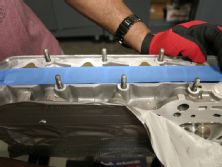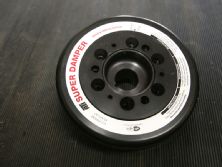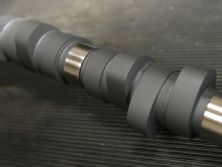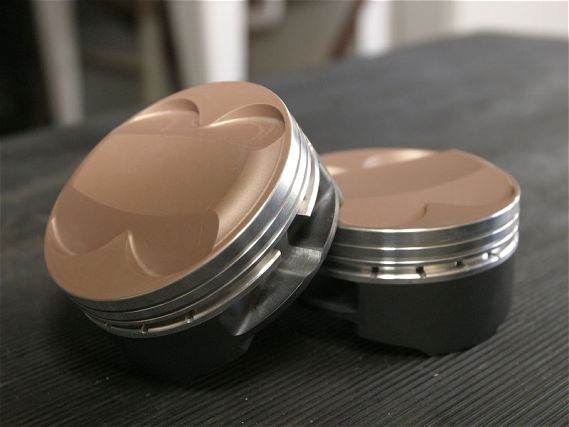 | Dropping the F Bomb - F22A Motor Build
| Dropping the F Bomb - F22A Motor Build
Last month we announced a big engine build-off between ourselves and some select Source Interlink titles as part of Castrol Syntec's Top Shop Challenge, where each magazine gets to pick an engine and engine builder of choice to see which one will make the most power and maintain its longevity while on an engine dyno. We said that this would be a David versus Goliath match, so we're proud to announce our entry: the Honda Accord F22A engine, to go up against the likes of the RB26, SR20 and 4G63 monoliths. Think we're outpowered? Well, we are, but that doesn't mean we're not going to put up the good fight. Bisi Ezerioha is a champion when it comes to tuning these engines, and other single cam Honda powerplants. His expertise has won him numerous drag racing challenges and long lasting engine configurations. This month he drops knowledge on the basic outline and battle plan for our engine in the months to come.
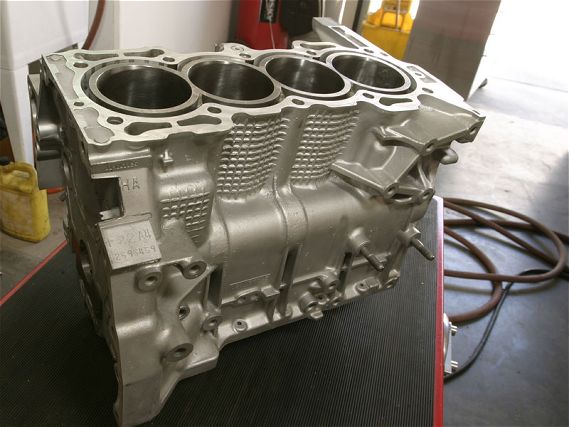 | Dropping the F Bomb - F22A Motor Build
| Dropping the F Bomb - F22A Motor Build
We're building an F22A, single cam non-VTEC engine out of a Honda Accord. To most every day people, it's a very lackluster platform that only grandmothers seem to appreciate. In stock form, it puts out 130hp but believe it or not, because of its superior head design, we'll be able to pull some astronomical figures. We want to show that you can pick up an engine for next to nothing, not have to spend a million dollar on it and make some great power. It's an alternative to running a K-series or B-series motor, and it's also very reliable.
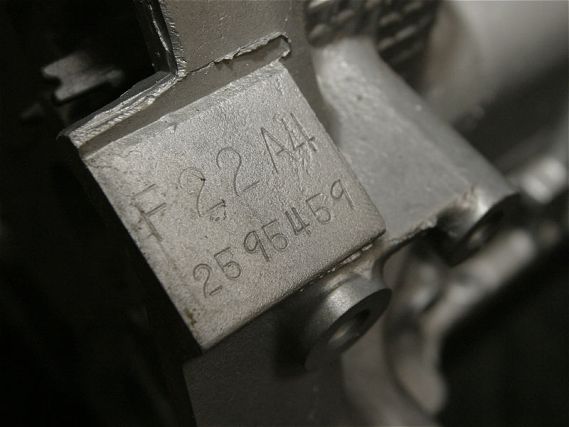 | Dropping the F Bomb - F22A Motor Build
| Dropping the F Bomb - F22A Motor Build
What's the appeal to using a single cam? Well, as you know, I started racing with a single cam D-series because of cost. I ran 12.60s in full street form and 10.7s full race. I was a student at the time when everyone started putting the ubiquitous B-series engines into their cars; it was $3K to do that swap and I couldn't afford it. For a very modest price - $350 to a $1K - I could build a single cam that could run as well, if not beat those twin cams. It didn't make power that was superior to theirs but it accelerated like there was no tomorrow - and if you know, acceleration in drag racing is the name of the game.
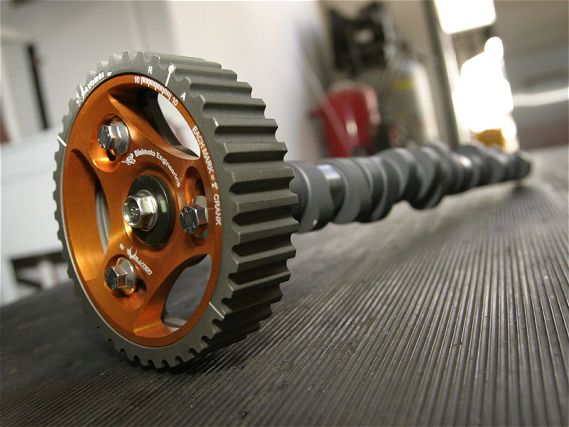 | Dropping the F Bomb - F22A Motor Build
| Dropping the F Bomb - F22A Motor Build
The Accord motor is really a big brother to the D-series, and if anyone took the time to look at the head configuration of the F22A1/A4/A6 heads, they'll see that it's a very superior design. I don't know why Honda designed the intake ports the way they did, but it's similar to the F20C (S2000), has a similar gasket configuration as the H23 (but without the valve train challenges) and has a very ideal valve/angle placement. You can have exotic lift and duration. With our high flowing head and block configuration, it's going to be a win-win situation. In fact, the F22A1/4/6 head, in factory form (with 34mm intake valves), outflows most street-ported B-series heads. All you need then is a little bit of compression and a camshaft and you can run good power, reliably. Nobody would ever consider an Accord engine, which makes ours a perfect underdog. To date, the fastest F22 I've ever built for my own race car makes 382hp to the crank.
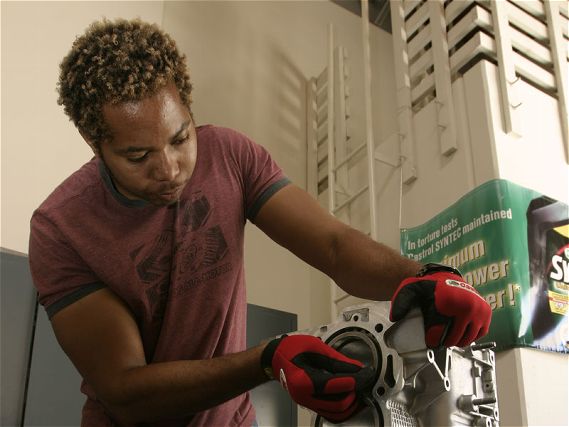 | Dropping the F Bomb - F22A Motor Build
| Dropping the F Bomb - F22A Motor Build
The Bottom End
We'll be using Golden Eagle to do the sleeve work on our block with ductile iron sleeves that will be strutted; the strutted nature of these sleeves is very critical. As opposed to an open deck, it's about as close to a closed deck as you can get without any heating challenges. If you look about a quarter-inch down from the deck surface, you'll see these pillars that help stabilize the sleeves. At high rpm, you don't want your sleeves to move around, which can cause leakage between the head and gasket. A strutted sleeve will not only stabilize but it will keep the compression within the cylinder walls, in the engine where it belongs. A closed deck will just give you heating problems that are unnecessary. We'll have a 90mm bore, which is about as big as I would go on a NA street/strip application and will un-shroud the valves and help flow better to the combustion chamber. Pistons will be from Arias with ceramic barrier top and friction-reducing, molybased coating on the piston skirt. The ceramic coating on the piston dome helps to keep the heat inside the cylinder where it belongs, so that when the explosion occurs from combustion, you don't lose that heat to the surroundings. Engines are nothing but chemical-to-heat-to-mechanical energy converters. You want to create a chemical reaction that can produce heat, which can then be harnessed, and if kept in intact, you will be allowing it to do mechanical work to the piston itself, which then transfers to the crankshaft, which means you've done your job. Allowing heat to escape from the combustion chamber during those events hurts power.
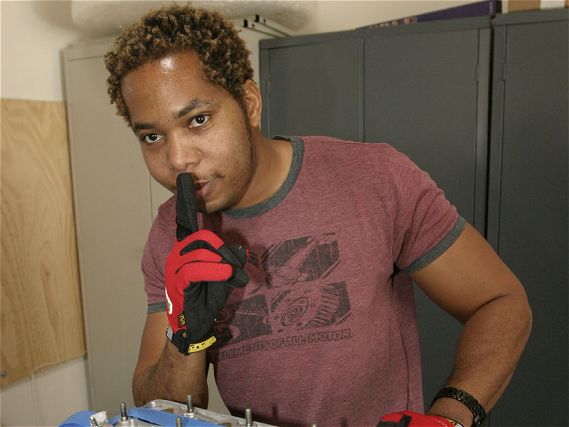 | Dropping the F Bomb - F22A Motor Build
| Dropping the F Bomb - F22A Motor Build
The Top End
It's important that we utilize the right camshaft to orchestrate proper flow into the engine. Since we only have one cam, lobe separation is very, very critical. We don't have the luxury of a secondary cam to actuate the intake and exhaust cams separately to create a higher or lower overlap period. My experience with Web Cams will allow me to select the right grind to make high rpm power, amazing torque and continue to give us the reliability that we need. I can't give away the specs on the actual cam we're going to use for the Castrol Syntec Top Shop Challenge, but it is close to the Spec 3 cam that I have listed on my website. The cylinder head has been worked over to give us optimal flow.
Since we'll be able to use supplied 100-octane fuel and roughly 12:1 compression on our engine, we'll show that this ordinary underdog can come out on top. What's more important is that we'll make it reliable. You can make a lot of power on any engine but how long will it last? We've done a great job here at Bisimoto Engineering to make sure our engines not only produce power but stand the test of time. In my racing career, I haven't had a single engine failure (knock on wood) during any race weekend; most of my peers tend to break engines at almost every event. It's the same technology, attention to detail and meticulous nature we use when building engines that we'll apply here to the Castrol Syntec Top Shop Challenge.

